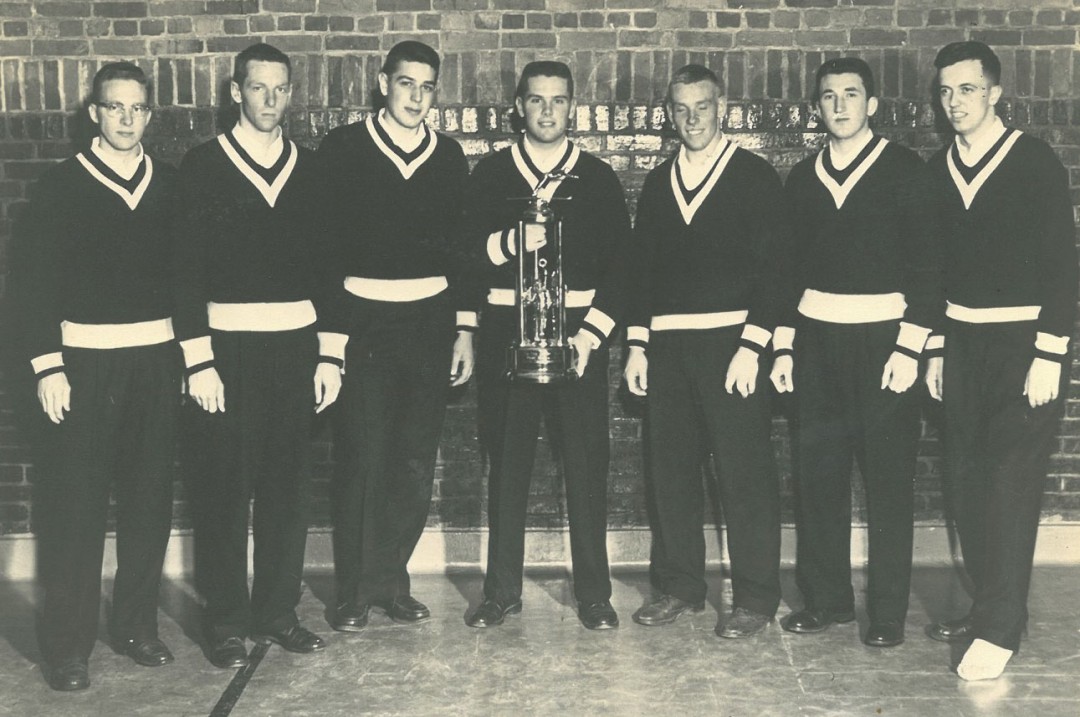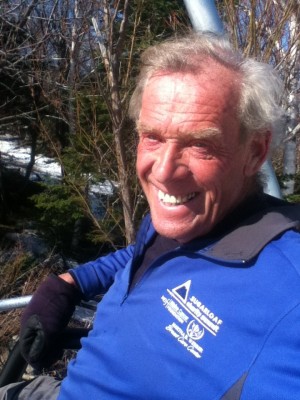John Christie, Ski Industry Veteran, Re-Discovers His Love For Cross-Country Skiing.

Credit: John Christie
Editor’s Note: SeniorsSkiing.com is proud to have this contribution from John Christie. John is a legend in the ski business. Founder, owner and/or manager of several New England ski resorts (Sugarloaf, Mt. Snow, Saddleback), John has served as president of Vermont and Maine Ski Areas Associations, was a board member of the National Ski Areas Association and other charitable non-profits as well as author of books (The Story of Sugarloaf, Maine Outdoor Adventure Guide, Skiing Maine) as well as numerous and regular features in a variety of publications. At 78, he is still discovering and re-discovering that “it’s never too late”. Our kind of guy.
As someone who bought his first sea kayak just before he reached the age of 70, and now spends hours on end in the summer exploring Maine’s coastline, I guess I’m authorized to say that it’s never too late to discover a new way to enjoy the outdoors.
Similarly, I’m amazed as I travel from ski area to ski area in the winter and see the number of retirees who continue to ski regularly, many who’ve rediscovered the sport after a long absence, and, most impressively, seniors who’ve taken up alpine skiing for the very first time.

Credit: John Christie
It’s those newcomers to the sport who are discovering how much fun, and how easy it is to make the most of Maine’s long winters. Thanks to improvements in ski equipment technology, along with senior-friendly professional instructors at virtually every ski area in the state, learning to ski at an advanced age is not only a piece of cake, but it’s an opportunity to enjoy the winter to its fullest.
But enough about alpine skiing. Many seniors have learned that a few hours out on cross-country skis is a magical way to spend a winter day.
I was introduced to cross-country skis during my freshman year in college, in 1956. Not because I had harbored a yearning to do so, but because I had little choice. You see, this was the now by-gone era of the four-event intercollegiate competitor that required those of us who wanted to claim our berth on the team to compete in all four disciplines: downhill, slalom, jumping and cross-country.
As an alpine skier, I begrudgingly became a Nordic competitor as a reasonably accomplished jumper and a slightly more than passable cross-country racer. Any success I had in achieving decent results related in no way to my having mastered the technique or much of any technique at all. I did it through exhausting exertion, determination, youthful fortitude and strength, a nagging feeling that I had a responsibility to my team and my beloved Bowdoin, and sheer stupidity.
The result was that every race, a symphony of intermittent stumbling, cursing and frequent vomiting was, I’m sure, great entertainment for the throngs of co-eds along the racecourse. I remember one race in particular in Farmington where I not only artfully combined all of the above, but added an especially amusing touch by sticking a ski pole directly into the top of my right foot, finishing the race in great pain and with a bloody sock. An act to be replicated decades later by a certain Red Sox pitcher during a crucial World Series game.
So that was my context for cross-country skiing. An activity to be undertaken when absolutely required and avoided whenever possible. This less-than-enthusiastic attitude for the sport was further encouraged by the quality of the equipment during my racing hey-days: loose-fitting boots, easily-breakable wood skis and bamboo poles, and bindings that deluded the skier into thinking that he could actually control his skis on icy downhill runs. And skis without any edges, of course.
It’s not too much of a stretch to say that when I stepped up on the stage to accept my hard-earned Bowdoin degree in June of 1959, my first thought was, “Thank God, now I’ll never have to cross-country ski again!”
Although my antipathy toward the sport was clearly more exaggerated than the average skier, it’s apparent that very few people were eagerly embracing the activity during the 1960’s . It was during this period of time that I was cutting my teeth in the ski business, and alpine skiing was my life. When I left the business in the late 1970’s to embark on more mature, and fiscally-reliable pursuits, I was surprised…no, shocked…to hear that people were being lured to, and actually embarking on cross-country skiing for FUN!
So was born the renaissance of the sport, and the next act in the evolution of cross-country skiing from hunting to warfare to exploration to competition to recreation. I begrudgingly reintroduced myself to it, as I was taking a self-imposed hiatus from alpine skiing, and was pleasantly surprised with two things. First, the technology had evolved from wood to composite skis, from imitation to actual bindings that allowed you to actually control the skis, and from waxable wood bottoms (that never adequately and simultaneously accommodated the proper waxes for both uphill and downhill skiing) to fish scales that provided for both uphill traction and downhill gliding. Second, I was struck that without the need to better your competitors, you could actually ski along at a leisurely pace and even enjoy the serenity and the scenery and the exhilarating fun of being out in nature on a crisp winter day.
The popularity came about for a variety of reasons, including the increasingly prohibitive cost of alpine skiing for some folks. Additionally, there was a growing national awareness of the importance of physical fitness, so many people were becoming more active, and when the summer hiking season was over they were looking for a winter counterpart.
So that was my reintroduction, thankfully, to an activity I’ve grown to love. I will say that when the weather’s right, and I have the time, I’ll head for the hills with my alpine skis, but increasingly I’ll opt for the fun of a few hours out on the trail on my skinny ones.












Great perspective on a sport that has evolved so much. I agree there’s nothing more pleasant than meandering through the woods on XC skis for a few hours on a winter afternoon. Maybe we seniors should take up jumping next?
Hi Tamsin,
They’ve rebuilt the jump in Brattleboro.
How about you and I do a double??
John